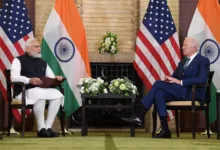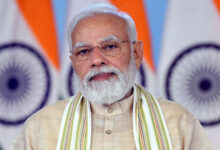Covid-19 guidelines for the Char Dham Yatra

Covid-19 travel restrictions uplifted
India is a country famous for its diversity in the whole world. The religious beliefs in our country are known to the world, with so many religions loving together, maintaining their diverse religious beliefs while living together. The people of our country are very religious and that’s what is so special about us, right? Every year, many pilgrims go on their pilgrimage to worship. However, things changed a lot after the COVID-19 virus came to the country. The spread of the virus was so fast that the government had to impose a nationwide lockdown in the country.

There were no travel prospects and therefore, pilgrimage and heritage destinations were closed too. This forced the pilgrims to stay at their homes and not go on their pilgrimage to worship. This was a must in order to protect the people of the country since the wave was unstoppable. Moreover, ever since the economy started to open up, these pilgrimages were opened too, allowing the pilgrims to visit their heritage places and worship. But the second wave of the pandemic had some other plans. The cases started to rise again, the virus was fatal than ever, destroying the whole country yet again.
However, now when things are starting to get better, with the vaccination rate picking a good pace, the travel restrictions are slowly lifting up. Recently, the government has lifted up the restrictions from the Char Dham Yatra, a popular heritage visit in our country. However, the travel is still subject to some COVID guidelines in order to curb the virus. In this article, we will be discussing about all the travel guidelines for the Char Dham Yatra which are recently released.
What is the Char Dham Yatra?
The Char Dham is a set of four pilgrimage sites in India. It is believed that visiting these sites help in achieving Moksha, eternal peace which everyone craves for. People travel to these sites to complete their visit to the four heritage pilgrimage and therefore call it the Char Dham Yatra. The four Dhams that we are talking about are Badrinath, Puri, Rameswaram and Dwarka. Travelling during the COVID-19 virus is risky and therefore is subject to many guidelines. Let us learn about these guidelines.
The Uttarakhand High Court on Thursday decided to lift the stay on the Char Dham Yatra, allowing the pilgrims to visit the four sites. It allowed the state government to hold the pilgrimage under a strict COVID-19 protocol, therefore ensuring that the pilgrimage does not become a site for the spread of the virus. A high court bench comprising of Chief Justice RS Chauhan and Justice Alok Kumar Verma took the decision of lifting the ban on the Yatra and said that the pilgrimage will start again, however with some restrictions.
Let us now discuss about the SOPs.
What are the Standard Operating Procedures (SOPs) for the Char Dham Yatra that are specified by the court?
There are a number of Standard Operating Procedures that are issued by the High court for the travel to the Char Dham Yatra Let us discuss them one by one.
The first and foremost procedure is the daily limit that the Uttarakhand high court has put on the devotees/pilgrims visiting the temple. The limit is 800 devotees for Kedarnath Dham, 1,000 for Badrinath Dham, 600 for Gangotri and 400 for Yamunotri. This limit on the daily number of devotees visiting the temple is done only in order to curb the virus and to prevent its spread by avoiding large gatherings, as we have previously seen that these huge gatherings are a big contributor towards the spread of the deadly virus.

The second procedure specified by the high court was to carry a negative RT-PCR report. A negative report of the COVID-19 test is required for any devotee coming for the Char Dham Yatra. A negative report of the COVID-19 virus test ensures that the traveller does not have the virus and therefore is safe.
Vaccination plays a very major role in travel too. Therefore, the high court made it necessary for any visitor coming for the Char Dham Yatra to carry a vaccination certificate, which ensures that the person has been vaccinated with the approved vaccine in the country. It will be necessary for anyone of age 18 and above to carry this certificate while visiting the holy sites.
Moreover, we all know how contagious this virus is. It can spread so fast through the water and therefore the high court decided that no one will be allowed to take a bath in any of the springs around the temple. This is done in avoid to the spread of the virus and therefore to protect the people and the country.
The last procedure which was specified by the high court in order to prevent the virus from spreading is that the police force will be deployed as per requirement during the Char Dham Yatra. The force will be deployed in Chamoli, Rudraprayag and Uttarkashi districts. This will be done in order to ensure that people follow the protocols, maintain discipline and there are no ongoing activities that can lead to the spread of the virus.
What was the case before the high court?
The Uttarakhand state cabinet previously had plans to open up the Char Dham Yatra in a phased manner for pilgrims outside the state depending upon the COVID-19 cases. They decided this in order to promote tourism and to therefore give a boost to their economy. However, the high court was against it. The Uttarakhand high court put a stay on the Char Dham Yatra on June 28 and halted the visitors from visiting the pilgrimage till further orders. This was done due to several of reasons.

The first and foremost reason was the PIL related to a spike in COVID-19 cases. The court heard the PIL and was in favour of it. Moreover, the lack of health facilities in the destination proved to be a major factor forcing the Uttarakhand high court to put a stay on the Char Dham Yatra. Moreover, the country was undergoing a second wave of the COVID-19 virus and therefore it was not the right decision to start the Char Dham Yatra at that time.
Later on, the state government filed a Special Leave Petition against this order in the supreme court, hoping to lift the ban on this travel. However, the petition could not be heard due to some issues and was still pending. On the other hand, Advocate General SN Babulkar along with CSC Chandrashekhar Rawat recently requested a high court bench headed by Chief justice RS Chauhan to vacate the travel. However, the high court refused to hear this plea stating that the matter is still pending in the apex court.
Due to this, the state recently withdrew its Special Leave Petition from the supreme court, paving the way for the plea to be heard in the high court. The plea was made in the high court as the Char Dham Yatra provides livelihood to a large population living in that area, including the travel agents and priests. Moreover, a lot of sentiments of the people are connected with the Char Dham Yatra. Therefore, the court decide to lift the ban on travel but to impose some restrictions in order to prevent the spread of the virus.






